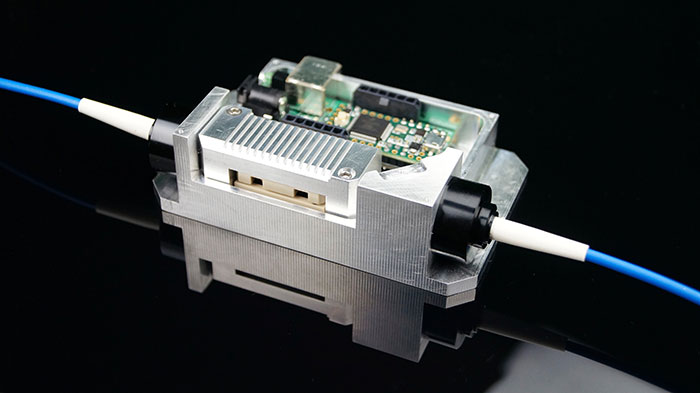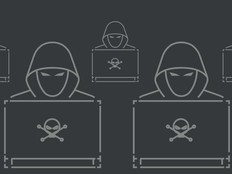How One Energy Department Lab Uses Physics to Boost Cybersecurity
It’s drilled into businesses and government agencies alike: encrypt your data. But what if normal encryption is not enough?
The Energy Department’s Oak Ridge National Laboratory (ORNL) has designed a cybersecurity protocol that uses physics to make it faster and more secure to share and protect encrypted data. ORNL has non-exclusively licensed the technology to Qubitekk, a San Diego-based company that develops quantum cryptography solutions to secure machine-to-machine communications.
The hope is that this technology, which uses quantum light particles (known as photons), will allow federal IT security professionals, and those in the private sector, to better protect critical network infrastructure in the energy sector.
SIGN UP: Get more news from the FedTech newsletter in your inbox every two weeks!
How to Harness Photon Technology
Current encryption techniques use mathematical algorithms to code information that can only be deciphered by a recipient who knows the encryption key. However, in a statement, ORNL notes that cybersecurity threats in the energy environment are growing in frequency, scale and sophistication.
Photons have numerous properties and can be used in quantum computing or to protect sensitive information, quantum researchers found. However, according to the ORNL statement, systems that emit single photons typically do so randomly, and it is difficult to generate them deterministically, or when they are needed. The ORNL researchers used a method for their solution known as down-conversion, which produces two photons instead of one. This is accomplished by detecting one of the photons to signal the presence of the other.
“The trick then is to direct the heralded photon using a combination of high speed and low-loss operations, so that it appears when needed,” Warren Grice of ORNL’s Computational Sciences and Engineering Division says in the statement.

An existing Qubitekk prototype will leverage ORNL’s technology to enhance encryption. Photo credit: Oak Ridge National Laboratory
To keep from losing the photon pairs, the team built upon the concept of multiplexing, an approach that uses a series of light-source systems comprising components common in fiber optics. The ORNL system switches the speed and frequency of the heralded photon, allowing the researchers to carry out switching in the frequency domain that potentially reduces single-photon loss.
“The goal is to specify and control every aspect of the photon’s quantum state, constraining everything to a single mode so that the photons emitted from the single-photon source are identical — each one indistinguishable from the next,” says Nicholas Peters, another co-inventor of the technology.
Security Applications of Photon Technology for the Energy Sector
What is the upshot of all this for cybersecurity? The identical photon pairs can be used to develop quantum key encryption technologies that protect information from malicious cybersecurity threats when shared over existing machine-to-machine networks.
The technology could allow those who run the networks used to control power grid operations to detect, in real time, the presence of an adversary attempting to intercept the exchange of secret keys used in cryptographic algorithms that protect energy sector information. The technology has the potential to enhance the energy sector’s resiliency against a cyberattack.
Qubitekk, which has been developing a quantum encryption device based on the single-photon source concept, hopes to strengthen that technology through further development of ORNL’s new approach.
“The idea of a nearly on-demand, single-photon source can be used to increase the speed, or data rates, and the distance you can send the quantum keys when transmitting encrypted information,” Duncan Earl, president and CTO of Qubitekk, says in the statement. “The ORNL technology could address both of those issues, which could move our product closer to commercialization.”
Earl is a former ORNL researcher who worked with the lab’s Cyber Warfare group and the Quantum Information Sciences team.
Qubitekk plans to integrate its existing technology with ORNL’s, which could either increase quantum encryption data rates tenfold or maintain current data rates over much longer transmission distances.
Earl expects Qubitekk to further develop the single-photon source design and plans to advance to field trials with the company’s existing customers, including California-based utility companies. ORNL will provide additional support as needed.









